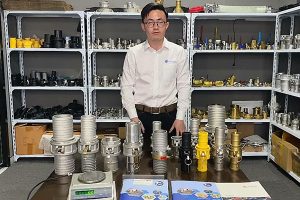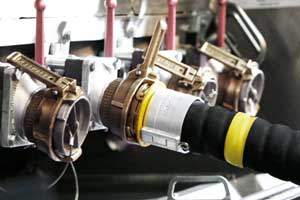Camlock couplings are designed with different types (e.g., Type A, B, C, D, etc.) to ensure proper pairing and secure connections. Each type has a specific role, and they are not interchangeable unless designed to be compatible. Here’s a guide on how to use different types of Camlock couplings together:
1. Understand Camlock Coupling Types
Camlock couplings are categorized by gender and function:
– Male (Plug) Couplings: These have a protruding end that fits into the female coupling.
– Examples: Type A (Male Threaded), Type B (Male Plain End).
– Female (Socket) Couplings: These have a recessed end that accepts the male coupling.
– Examples: Type C (Female Threaded), Type D (Female Plain End).
Other types include adapters, dust caps, and hoses with built-in Camlock ends.
2. Pairing Camlock Couplings
To connect Camlock couplings, follow these steps:
2.1. Match Compatible Types:
– Male and female couplings must be of the same size and series (e.g., both must be Series A, B, C, etc.).
– Example: Type A (Male) pairs with Type B (Female), and Type C (Female) pairs with Type D (Male).
2.2. Ensure Proper Alignment:
– Align the male and female ends properly before connecting.
– Insert the male end into the female end and rotate the locking arms (if present) to secure the connection.
2.3. Lock the Coupling:
– Engage the locking mechanism (e.g., levers or pins) to ensure a secure connection.
– Listen for the “click” sound or visually confirm that the coupling is fully locked.
3. Using Adapters for Different Types
If you need to connect incompatible Camlock types, use adapters:
– Adapters: These are intermediary pieces that allow connections between different Camlock types or sizes.
– Example: Use a Type A to Type C adapter to connect a Type A male coupling to a Type C female coupling.
– Threaded Adapters: These allow connections between Camlock couplings and threaded fittings (e.g., NPT, BSP).
4. Mixing Sizes
– Camlock couplings of different sizes cannot be directly connected.
– Use reducers or step-up adapters to connect couplings of different sizes.
– Example: Use a 2-inch to 1.5-inch reducer to connect a 2-inch Camlock to a 1.5-inch Camlock.
5. Safety Tips for Mixing Types
– Check Compatibility: Always verify that the couplings are compatible in terms of type, size, and material.
– Avoid Cross-Threading: When using threaded adapters, ensure threads are aligned properly to avoid damage.
– Use Safety Clips: For added security, use safety clips or pins to prevent accidental disconnection.
6. Common Camlock Pairings
Here are some common Camlock pairings:
– Type A (Male Threaded) + Type B (Female Plain End): For connecting a threaded male end to a plain female end.
– Type C (Female Threaded) + Type D (Male Plain End): For connecting a threaded female end to a plain male end.
– Type E (Female Threaded) + Type F (Male Threaded): For connecting two threaded ends.
7. Practical Example
If you have a hose with a Type A male end and a tank with a Type C female end:
1. Use a Type A to Type C adapter to connect the two.
2. Insert the Type A male end into the adapter.
3. Connect the adapter to the Type C female end on the tank.
4. Secure the connection using the locking mechanism.
—
By understanding the types, using adapters when necessary, and following proper pairing guidelines, you can safely and effectively use different Camlock couplings together.




